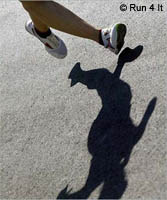EU project provides remedy for Achilles' heel injuries
Athletes suffering from tendon injuries will welcome the findings of an EU-funded research project which show that adult stem cells can be engineered to make new tendon tissue. The findings are part of the Genostem Integrated Project, comprising a consortium of scientists from 11 European countries and Israel. It received a total of 8.7 million euro under the 'Life sciences, genomics and biotechnology for health' thematic priority of the Sixth Framework Programme (FP6) to investigate new advances in cell-based therapies for the regeneration of connective tissue. Tendon and ligament injuries are frequent among amateur and professional athletes alike, and present a significant challenge to orthopaedic medicine. Until now, therapeutic options used to repair torn ligaments have consisted of autografts (the patient's tissue grafted into a new position in or on his or her body), allografts (tissues transplanted from one person to another) and synthetic prostheses. However, to date none of these alternatives have provided a successful long term solution. Similarly, despite their ability to maintain and repair tissue in organisms in which they are found, adult stem cells - an undifferentiated cell found among differentiated cells in a tissue or organ - have shown very little capacity for self repair. Also, after traumatic injury or disease, the regenerative power of adult tissue is often not sufficient. Using this knowledge, Israeli and German partners in the project used a novel approach involving combining the regenerative properties of adult stem cells with several growth factors found in bone morphogenetic protein (BMP) known for their ability to induce tendon or ligament formation. Researchers took mesenchymal stem cells (MSCs) residing in the bone marrow and fat tissue of mice, and engineered them so that they would express BMPs, namely Smad8 and BMP2. These were then implanted into torn Achilles tendons of rats. The researchers found that the cells not only survived the implantation process, but also were recruited to the site of the injury and able to repair the tendon for at least seven weeks after implantation. Furthermore, the cells changed their appearance to look more like tendon cells (tenocytes), and significantly increased production of collagen, a protein critical for creating strong yet flexible tendons and ligaments. The presence of new tendon tissue was detected using a special type of imaging known as double-quantum-filtered magnetic resonance imaging (DQF MRI), which recognises differences in collagen-containing tissue such as tendon, bone, skin, and muscle. The resulting paper, published in the Journal of Clinical Investigation, notes that the proteins BMP and Smad are present in other tissues such as nerve and liver, suggesting that this type of delivery technology may be helpful for other degenerative diseases. 'This is really a big step as it is the first time that researchers have been able to repair 'in vivo' tissue specific to tendon injuries,' Christian Jorgensen, coordinator of the Genostem project at the French National Institute for Health and Medical Research (INSERM), told CORDIS News. He explained that similar results have also been achieved by other project partners for cartilage and bone. 'The next steps are the most difficult ones,' said Mr Jorgensen. 'The project partners now must test these concepts on larger animals and on human beings.' To do so, researchers will inject human cells, in which the BMP proteins are expressed, into immune suppressed mice. 'This way, we can test whether the cells remain unchanged and compatible before we proceed with their pre-clinical application.' The four-year project ends in 2007.
Countries
Switzerland, Germany, France



